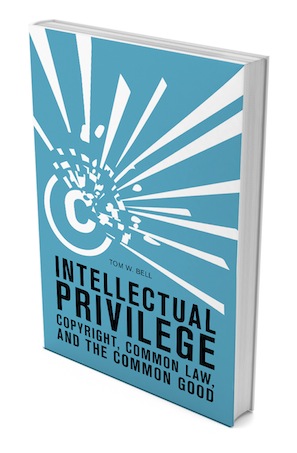By Brent Skorup and Melody Calkins
Recently, the FCC sought comments for its Media Modernization Initiative in its effort to “eliminate or modify [media] regulations that are outdated, unnecessary, or unduly burdensome.” The regulatory thicket for TV distribution has long encumbered broadcast and cable providers. These rules encourage large, homogeneous cable TV bundles and burden cable and satellite operators with high compliance costs. (See the complex web of TV regulations at the Media Metrics website.)
One reason “skinny bundles” from online video providers and cable operators are attracting consumers is that online video circumvents the FCC’s Rube Goldberg-like system altogether. The FCC should end its 50-year experiment with TV regulation, which, among other things, has raised the cost of TV and degraded the First Amendment rights of media outlets.
The proposal to eliminate legacy media rules garnered a considerable amount of support from a wide range of commenters. In our filed reply comments, we identify four regulatory rules ripe for removal:
- News distortion. This uncodified, under-the-radar rule allows the commission to revoke a broadcasters’ license if the FCC finds that a broadcaster deliberately engages in “news distortion, staging, or slanting.” The rule traces back to the FCC’s longstanding position that it can revoke licenses from broadcast stations if programming is not “in the public interest.”
Though uncodified and not strictly enforced, the rule was reiterated in the FCC’s 2008 broadcast guidelines. The outline of the rule was laid out in the 1998 case Serafyn v. CBS, involving a complaint by a Ukrainian-American who alleged that the “60 Minutes” news program had unfairly edited interviews to portray Ukrainians as backwards and anti-Semitic. The FCC dismissed the complaint but DC Circuit Court reversed that dismissal and required FCC intervention. (CBS settled and the complaint was dropped before the FCC could intervene.)
“Slanted” and distorted news can be found in (unregulated) cable news, newspapers, Twitter, and YouTube. The news distortion rule should be repealed and broadcasters should have regulatory parity (and their full First Amendment rights) restored. - Must-carry. The rule requires cable operators to distribute the programming of local broadcast stations at broadcasters’ request. (Stations carrying relatively low-value broadcast networks seek carriage via must-carry. Stations carrying popular networks like CBS and NBC can negotiate payment from cable operators via “retransmission consent” agreements.) Must-carry was narrowly sustained by the Supreme Court in 1994 against a First Amendment challenge, on the grounds that cable operators had monopoly power in the pay-TV market. Since then, however, cable’s market share shrank from 95% to 53%. Broadcast stations have far more options for distribution, including satellite TV, telco TV, and online distribution and it’s unlikely the rules would survive a First Amendment challenge today.
- Network nonduplication and syndicated exclusivity. These rules limit how and when broadcast programming can be distributed and allow the FCC to intervene if a cable operator breaches a contract with a broadcast station. But the (exempted) distribution of hundreds of non-broadcast channels (e.g., CNN, MTV, ESPN) show that programmers and distributors are fully capable of forming private negotiations without FCC oversight. These rules simply make licensing negotiations more difficult and invite FCC intervention.
Finally, we identify retransmission consent regulations and compulsory licenses for repeal. Because “retrans” interacts with copyright matters outside of the FCC’s jurisdiction, we encourage the FCC work with the Copyright Office in advising Congress to repeal these statutes. Cable operators dislike the retrans framework and broadcasters dislike being compelled to license programming at regulated rates. These interventions simply aren’t needed (hundreds of cable and online-only TV channels operate outside of this framework) and neither the FCC nor the Copyright Office particularly likes being the referees in these fights. The FCC should break the stalemate and approach the Copyright Office about advocating for direct licensing of broadcast TV content.

 Last week, the Mercatus Center at George Mason University published the new book by Tom W. Bell,
Last week, the Mercatus Center at George Mason University published the new book by Tom W. Bell,  The Technology Liberation Front is the tech policy blog dedicated to keeping politicians' hands off the 'net and everything else related to technology.
The Technology Liberation Front is the tech policy blog dedicated to keeping politicians' hands off the 'net and everything else related to technology.